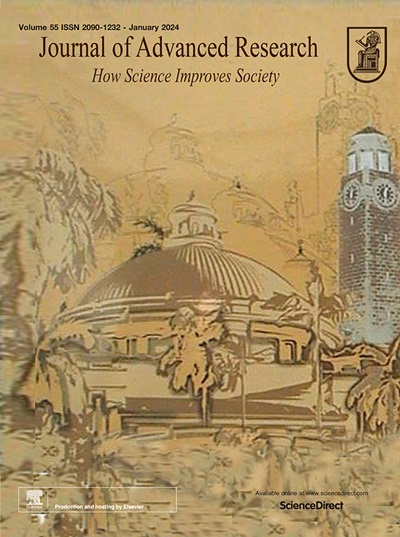利用增强素材编辑技术阻断异常血管生成。
IF 11.4
1区 综合性期刊
Q1 MULTIDISCIPLINARY SCIENCES
引用次数: 0
摘要
导言:血管生成异常在包括增殖性糖尿病视网膜病变在内的多种人类疾病的发展过程中扮演着重要角色,而目前仍有大量患者面临着治疗上的挑战。Prime editing(PE)是一种多功能的基因编辑方法,它为从基因上纠正具有挑战性的疾病提供了一个新的机会:本研究的目的是利用先进的 PE 系统编辑基因组 DNA,创建显性阴性(DN)血管内皮生长因子受体(VEGFR)2,以阻断氧诱导视网膜病变小鼠模型中异常视网膜血管生成:方法:在两种慢病毒载体中建立了先进的 PE 系统(简称 PE6x),其中一种载体携带增强型 PE 引导 RNA 和融合了优化逆转录酶的典型 Cas9 切分酶,另一种载体携带切分引导 RNA 和 DN-MLH1,以提高 PE 效率。然后,利用这两种慢病毒 PE6x 载体产生的双非整合慢病毒(NILVs),通过在体外和体内编辑麝鼠 VEGFR2 基因座,产生 VEGFR2 T17967A 突变,导致过早终止密码子(TAG,K796stop)产生 DN-VEGFR2,从而干扰对血管生成至关重要的野生型 VEGFR2:结果:将靶向 VEGFR2 的 NILVs 植入培养的小鼠血管内皮细胞后,通过新一代测序分析,基因组中 51.06% 的 VEGFR2 为 T17967A,并产生了 DN-VEGFR2。通过视网膜电图、光学相干断层扫描、眼底荧光素血管造影术和组织学评估,在氧诱导视网膜病变模型中,向出生后第12天的小鼠体内静脉注射双NILVs,可在出生后第17天的小鼠体内产生视网膜DN-VEGFR2,从而阻断视网膜VEGFR2的表达和激活以及异常视网膜血管生成,而不影响视网膜的结构和功能:结论:利用 PE6x 系统编辑基因组 VEGFR2 所产生的 DN-VEGFR2 可用于治疗眼内病理性血管生成。本文章由计算机程序翻译,如有差异,请以英文原文为准。
Exploitation of enhanced prime editing for blocking aberrant angiogenesis
Introduction
Aberrant angiogenesis plays an important part in the development of a variety of human diseases including proliferative diabetic retinopathy, with which there are still numerous patients remaining a therapeutically challenging condition. Prime editing (PE) is a versatile gene editing approach, which offers a novel opportunity to genetically correct challenging disorders.
Objectives
The goal of this study was to create a dominant-negative (DN) vascular endothelial growth factor receptor (VEGFR) 2 by editing genomic DNA with an advanced PE system to block aberrant retinal angiogenesis in a mouse model of oxygen-induced retinopathy.
Methods
An advanced PE system (referred to as PE6x) was established within two lentiviral vectors, with one carrying an enhanced PE guide RNA and a canonical Cas9 nickase fused with an optimized reversal transcriptase, and the other conveying a nicking guide RNA and a DN-MLH1 to improve PE efficiency. Dual non-integrating lentiviruses (NILVs) produced with the two lentiviral PE6x vectors were then employed to create a mutation of VEGFR2 T17967A by editing the Mus musculus VEGFR2 locus in vitro and in vivo, leading to generation of a premature stop codon (TAG, K796stop) to produce DN-VEGFR2, to interfere with the wild type VEGFR2 which is essential for angiogenesis.
Results
NILVs targeting VEGFR2 delivered into cultured murine vascular endothelial cells led to 51.06 % VEGFR2 T17967A in the genome analyzed by next generation sequencing and the production of DN-VEGFR2, which was found to hamper VEGF-induced VEGFR2 phosphorylation, as demonstrated by Western blot analysis. Intravitreally injection of the dual NILVs into postnatal day 12 mice in a model of oxygen-induced retinopathy, led to production of retinal DN-VEGFR2 in postnatal day 17 mice which blocked retinal VEGFR2 expression and activation as well as abnormal retinal angiogenesis without interfering with retinal structure and function, as assessed by electroretinography, optical coherence tomography, fundus fluorescein angiography and histology.
Conclusion
DN-VEGFR2 resulted from editing genomic VEGFR2 using the PE6x system can be harnessed to treat intraocular pathological angiogenesis.
求助全文
通过发布文献求助,成功后即可免费获取论文全文。
去求助
来源期刊

Journal of Advanced Research
Multidisciplinary-Multidisciplinary
CiteScore
21.60
自引率
0.90%
发文量
280
审稿时长
12 weeks
期刊介绍:
Journal of Advanced Research (J. Adv. Res.) is an applied/natural sciences, peer-reviewed journal that focuses on interdisciplinary research. The journal aims to contribute to applied research and knowledge worldwide through the publication of original and high-quality research articles in the fields of Medicine, Pharmaceutical Sciences, Dentistry, Physical Therapy, Veterinary Medicine, and Basic and Biological Sciences.
The following abstracting and indexing services cover the Journal of Advanced Research: PubMed/Medline, Essential Science Indicators, Web of Science, Scopus, PubMed Central, PubMed, Science Citation Index Expanded, Directory of Open Access Journals (DOAJ), and INSPEC.
 求助内容:
求助内容: 应助结果提醒方式:
应助结果提醒方式:


